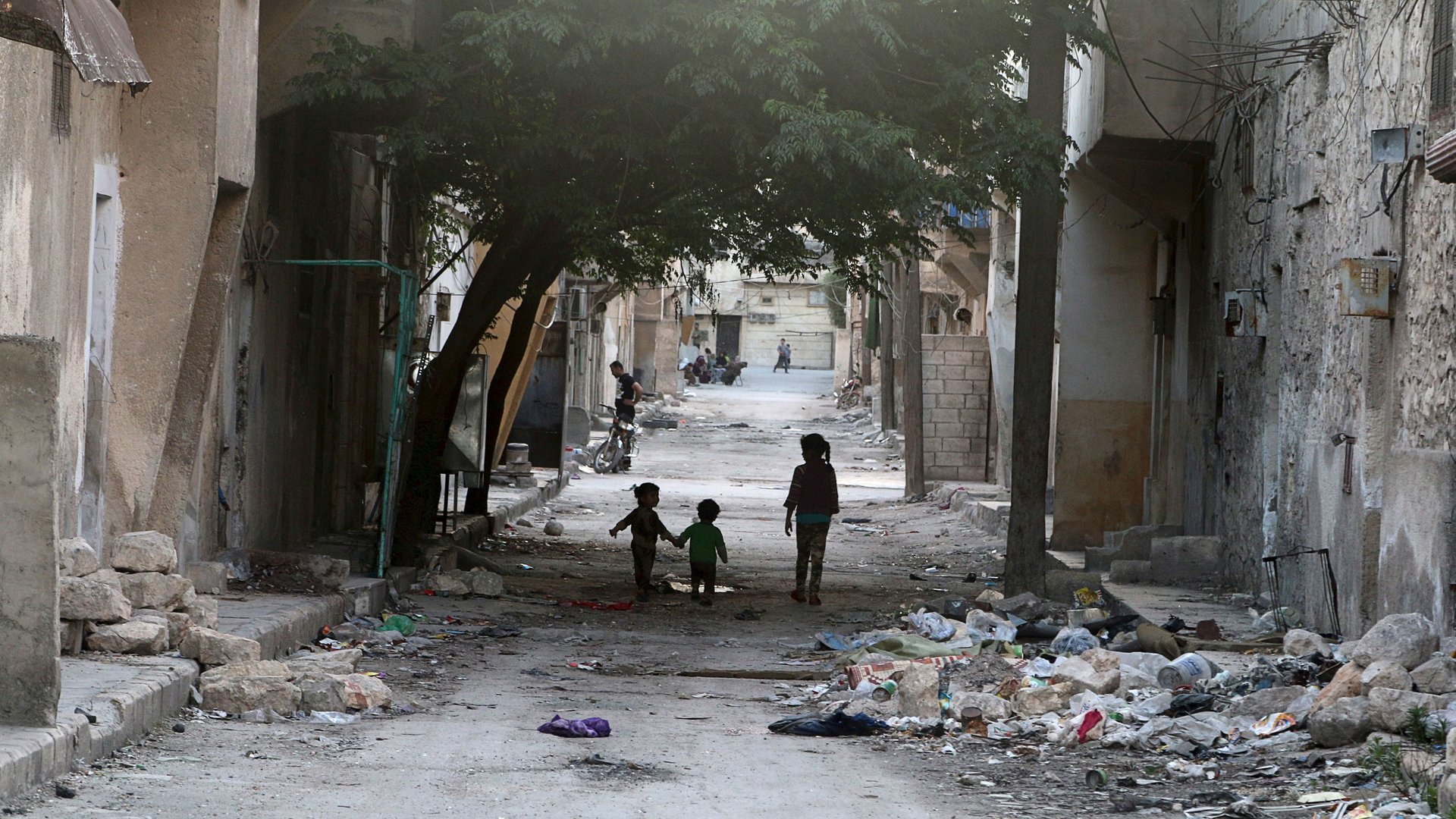Half a billion of our children are growing up in war, famine and other catastrophes
An estimated 462 million children of school age live in countries affected by humanitarian crises—including war, famine, and deadly epidemics—a UNICEF report published on May 4 found.


An estimated 462 million children of school age live in countries affected by humanitarian crises—including war, famine, and deadly epidemics—a UNICEF report published on May 4 found.
It’s an astonishing number, nearly one and a half times the total population of the US. For many of these children, living in crisis translates into a severe disruption of their education.
In Syria, for instance, at least 6,000 schools have been destroyed, taken over by military operations or repurposed. In the Democratic Republic of Congo, seven million children are missing out on education. Less than 30% of girls are literate in Nepal, and only 38% of children go to school in Liberia. Official enrollment data is missing for most of the world.
Things are particularly bad for girls, who are more likely to drop out of school than boys, particularly around puberty, when the lack of sanitary infrastructure affects their ability to attend school during their monthly period.
According to UNICEF, at least 75 million children are in need of education, or help to stay in school, in emergency areas alone. This puts them at a higher risk of trafficking and other abuses. It also affects their ability to contribute to the growth of their communities. Very little attention is dedicated to this emergency According to the report, only an estimated 2% of all humanitarian appeals are directed towards education in emergency situations.
To address this, UNICEF is launching a $4 billion education fund, promoted in Ukraine by its goodwill ambassador Orlando Bloom, to reach 13.6 million children within the next five years. The fund is designed to grow and reach 75 million children by 2030—until then, many millions will still go without an education. According to UNESCO, 124 million children (both in countries in crisis and outside) were out of school in 2015 (pdf, p.7). That’s higher than the previous years, despite a small increase in aid spent in education.